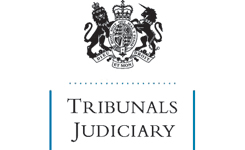|
Notes:
|
Reported as [2016] AACR 18.
Special educational provision – naming of school – whether place funding for children with special educational needs an additional cost under section 9 of the Education Act 1996
In all four cases, a local authority refused to specify in a statement of special educational needs (SEN) the parents’ preferred independent schools. In cases one and two, the authority named a maintained mainstream school with reserved SEN places. In case three, the authority named a maintained mainstream school without reserved places and, in appeal four, a maintained special school. The parents appealed to the First-tier Tribunal (F-tT). In cases one and two, the F-tT found that place funding for reserved SEN places was an additional cost, allowed the appeals and named the parents’ preferred independent schools. The F-tT’s findings meant that, in case one, the independent school was less expensive than the maintained school and, in case two, only £1,500 more expensive per annum. In case three, the F-tT discounted the first £6,000 of SEN funding for the child’s maintained school placement. In case four, the F-tT discounted the £10,000 place funding for the maintained special school. In both cases, the F-tT’s findings meant the parents’ preferred independent school was significantly more expensive than the authority’s preferred maintained school so that placements at the independent schools would constitute unreasonable public expenditure under section 9 of the Education Act 1996 (the 1996 Act). In cases one and two, the local authorities appealed to the Upper Tribunal. In cases three and four, the parents appealed. The principal issue in all four appeals was the treatment of local authority SEN funding in comparing the costs of rival educational placements for the purposes of section 9 of the 1996 Act. Different approaches had been adopted by the different F-tTs involved in these cases. A further important issue in case 4 concerned the appropriate venue for F-tT hearings where a child wishes to participate in the proceedings.
Held, dismissing appeals one and two and allowing appeals three and four and remitting to a differently-constituted F-tT, that:
1. generally, a comparative cost analysis of an independent school and a maintained special school, for the purposes of section 9 of the Education Act 1996, was to proceed on the basis that, where the special school had a vacancy, its place funding was not to be treated as an additional cost. The same approach was to be taken when comparing the costs of an independent school with a maintained mainstream school with SEN-reserved places (a specialist unit). In both cases, Age-Weighted Pupil Unit funding (AWPU) was irrelevant. But, a local authority “top-up” funding for the child’s placement was an additional cost to be taken into account: Oxfordshire CC v GB & Others [2001] EWCA Civ 1358; [2002] ELR 8 and EH v Kent CC [2011] EWCA Civ 709; [2011] ELR 433; [2011] AACR 36 (paragraphs 7 and 126);
2. where the choice was between an independent school and a maintained mainstream school without reserved places, the AWPU normally represented an additional cost for the purposes of section 9, in accordance with Kent. Further, any additional funding required in order to meet the child’s needs was to be taken into account as required by both Kent and Oxfordshire. If a local authority had some kind of dispensation from the normal requirements of the regulations, or it had a financial scheme that deviated from the funding norm, it must bring it to the attention of the tribunal and the other party. The same applied if the per pupil funding for maintained mainstream schools was greater than the AWPU minimum. That was the sum to be taken as the additional cost, since it was the money that followed the pupil (paragraphs 8 and 127 to 128);
3. (obiter) it was potentially an error of law for a F-tT to list cases in venues that precluded the participation of a child who wished to participate and the suitability of venues for SEN and school-related disability discrimination cases should be carefully considered (paragraphs 152 to 153).
|
